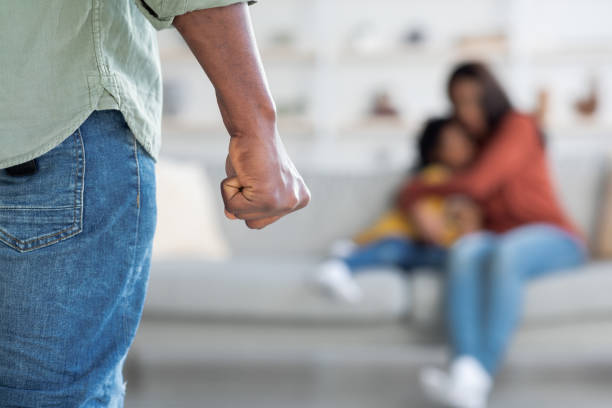- Empty cart.
- Continue Shopping
How to Recognize and Address Domestic Abuse

Domestic abuse is a deeply troubling and pervasive issue that affects individuals and families across the globe. It is essential to recognize the signs of domestic abuse and understand how to address it effectively.
What is Domestic Abuse?
Domestic abuse, also known as domestic violence or intimate partner violence, refers to a pattern of behaviors used by one person to exert power and control over another person in a close relationship. This abuse can occur between intimate partners, spouses, or family members, and it can take various forms, including physical, emotional, psychological, sexual, and financial abuse.
Common Signs of Domestic Abuse
Recognizing the signs of domestic abuse is crucial for providing support to survivors. Here are some common indicators:
1. Physical Abuse
Physical abuse includes actions like hitting, slapping, punching, kicking, or any form of physical harm. Visible injuries, such as bruises, cuts, or broken bones, may be evident.
2. Emotional and Psychological Abuse
Emotional and psychological abuse involves constant criticism, humiliation, manipulation, and control. Survivors may experience feelings of fear, anxiety, and low self-esteem as a result.
3. Isolation
Abusers often isolate survivors from friends and family to maintain control. Survivors may be restricted from socializing, working, or engaging in activities outside the home.
4. Sexual Abuse
Sexual abuse encompasses any non-consensual sexual activity or coercion. It can involve forced sex, unwanted sexual acts, or manipulation to gain sexual compliance.
5. Financial Abuse
Financial abuse occurs when an abuser controls the survivor’s financial resources, making it difficult for them to access money or make financial decisions independently.
6. Threats and Intimidation
Abusers may use threats of harm, violence, or legal action to maintain control. This can create a constant atmosphere of fear for the survivor.
7. Monitoring and Surveillance
Abusers may excessively monitor survivors, including tracking their movements, phone calls, and online activities. This invasion of privacy is a clear sign of abuse.
Recognizing Domestic Abuse
Recognizing domestic abuse can be challenging because it often occurs behind closed doors. However, there are several ways to identify if someone you know is experiencing domestic abuse:
1. Listen and Observe
Pay attention to any changes in behavior, mood, or physical appearance of the person you suspect may be a victim. They may become withdrawn, anxious, or excessively secretive.
2. Trust Your Gut
If something feels off or if you have a gut feeling that someone is being mistreated, trust your instincts. Your concern may be justified.
3. Notice Signs of Isolation
Be aware of individuals who are increasingly isolated from their friends and family, especially if this isolation is accompanied by controlling behavior from a partner or family member.
4. Look for Physical Signs
Visible injuries are a clear indicator of physical abuse. If someone you know frequently has unexplained injuries, ask if they are okay and offer support.
5. Listen to Their Story
If the person you suspect is experiencing abuse confides in you, listen without judgment. Encourage them to share their experiences, and let them know that you are there to support them.
Addressing and Preventing Domestic Abuse
Addressing and preventing domestic abuse requires a collective effort from individuals, communities, and society as a whole. Here are steps you can take to address and prevent domestic abuse:
1. Offer Support
If someone discloses that they are experiencing domestic abuse, offer your support without judgment. Let them know they are not alone, and help them access resources such as shelters, counseling, and legal assistance.
2. Educate Yourself
Learn about the dynamics of domestic abuse, the resources available in your community, and the legal protections in place for survivors. Knowledge empowers you to provide better support.
3. Intervene Safely
If you witness an incident of abuse, prioritize safety. Call the police if necessary and avoid putting yourself at risk. It’s essential to involve authorities when violence is occurring.
4. Promote Healthy Relationships
Promote healthy relationships within your community. Encourage open communication, respect, and consent in all relationships, starting with discussions in your own family.
5. Support Prevention Programs
Support and participate in programs and organizations that work to prevent domestic abuse. These programs often focus on education, awareness, and community support.
6. Raise Awareness
Use your voice to raise awareness about domestic abuse. Share information, resources, and stories to help break the silence surrounding this issue.
7. Advocate for Policy Change
Advocate for policies and laws that protect survivors and hold abusers accountable. Join or support organizations that work towards legislative changes in favor of domestic abuse survivors.
In Conclusion, Domestic abuse is a grave societal problem that affects countless individuals and families. Recognizing the signs of domestic abuse is the first step towards providing help and support to survivors. By taking action, raising awareness, and promoting healthy relationships, we can work together to address and prevent domestic abuse. Remember that offering support to survivors and creating a safe, non-judgmental space for them to seek help can make a significant difference in their lives. Together, we can strive for a world where domestic abuse is eradicated, and all individuals can live free from fear and violence.








